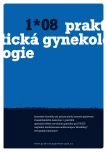Influence of programmed and induced labour on the frequency of caesarean sections and surgical vaginal delivery
Authors:
MUDr. Ladislava Kopřivová
Authors‘ workplace:
Gynekologicko-porodnické oddělení, Nemocnice Třebíč, příspěvková organizace
Published in:
Prakt Gyn 2008; 12(1): 17-20
Overview
Objective:
Evaluate wheather use of prostaglandin, oxytocine and diruption of membranes like methods of induction and programation of labor has influence on the frequency of caesarean sections and vaginal operation labors.
Design:
Retrospective study.
Methods:
Three groups of labors were compared in 2005 and 2006. First group includes labors without use of induction and programation (1 810). Second group compares labors with use of methods of induction (226). Third group compares labors with use of methods of programation (200). The sum of labors in 2005 and 2006 was 2236. Caesarean section rate, vaginal operation labors (forceps, vacuum extractor) rate and safety of prostaglandin usage were evaluated.
Results:
There was higher number of caesarean sections and vaginal operation labors in group with expectative management of conducting of labor than in group with programation. The number of caesarean sections and vaginal operation labors in group with expectative management of conducting of labor was practically equal as in group with the induction.
Conclusions:
Results of usage of prostaglandin and diruption of membranes did not confirm worries about higher frequency caesarean section and vaginal operation methods. There is no need to condsider using of induction and programation to be dangerous.
Key words:
induction, programation, prostaglandin, caesarean section, forceps, vacuum extractor
Sources
1. Roztočil A. Kontroverze a chyby v indukci porodu. Mod Gynek Porod 2007; 16 : 38.
2. Roztočil A, Měchurová A. Doporučené postupy při preindukci a indukci porodu. Čes Gynek 1999; 64 : 342.
3. Roztočil A, Koudelka M, HusičkaR et al. Programovaný porod: prospěch pro matku a plod nebo porodnický hazard? Čes Gynek 1996; 61 : 226.
4. Roztočil A. Indukovaný a programovaný porod. Mod Gynek Porod 2000; 9 : 279.
5. Roztočil A, Koudelka M, Jelínek J et al. Indukce porodu extraamniální aplikací vaginálních tablet PGE. Čes Gynek 1996; 61 : 221.
6. Hannah ME, Hannah WJ, Hellmann J et al. Induction of labor as compared with serial antenatal monitoring in postterm pregnancy. A randomized controlled trial. N Engl J Med 1992; 326 : 1587.
7. Hannah ME, Ohlsson A, Farine D et al. Induction of labor compared with expectant management for prelabor rupture of the membranes et term. N Engl J Med 1996; 334 : 1005.
8. Macer JA, Macer CL, Chan LS. Elective induction of labor versus spontaneous labor: A retrospective study of complications and outcome. Amer J Obstet Gynec 1992; 166 : 1690.
9. Yeast JD, Jones A, Poskin M. Induction of labor and the relationship to caesarean delivery: A rewiew of 7001 consecutive inductions. Amer J Obstet Gynec 1999; 180 : 628.
Labels
Paediatric gynaecology Gynaecology and obstetrics Reproduction medicineArticle was published in
Practical Gynecology

2008 Issue 1
Most read in this issue
- Retrograde ejaculation – one of the causes of male infertility
- Ultrasound biometry of the head in breech presented fetuses
- How women respond to combined NuvaRing® contraception
- Non-radical surgical treatment of cervical pregnancy after IVF/ET: a case report
